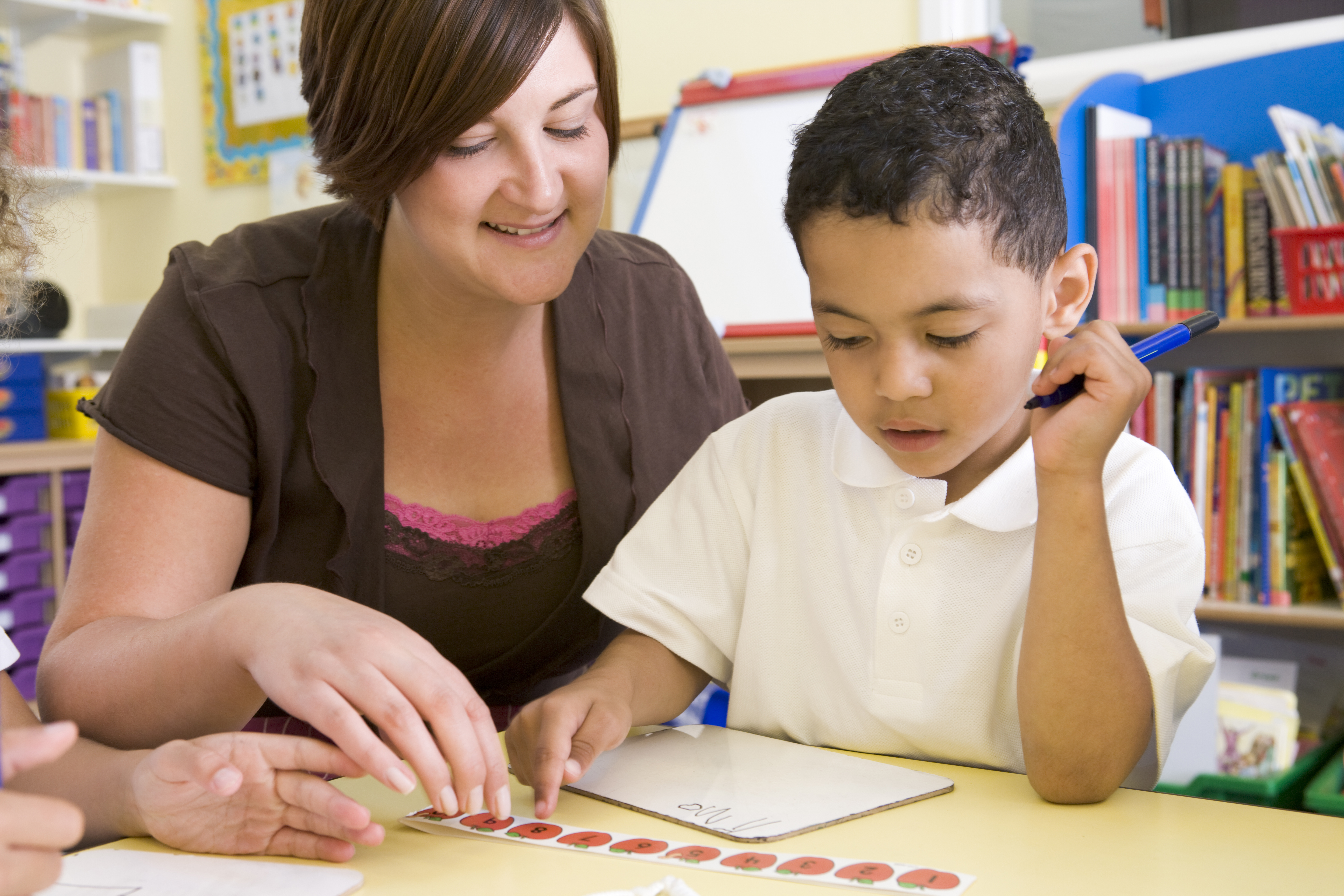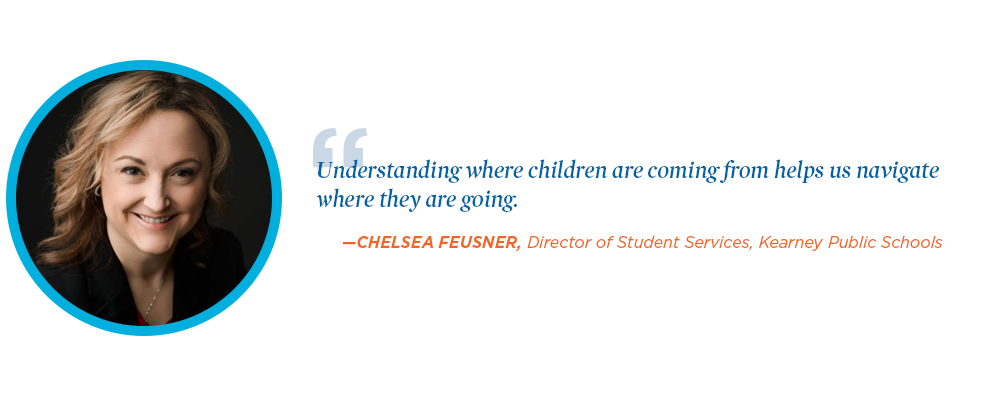
09 Dec Emerging theme: Transitions
It’s often said that the only thing constant is change. There is a tremendous amount of change during children’s early education experiences. Transitions include being introduced to new teachers and peers, learning new rules and routines, and mastering new skills.
These transitions not only impact children, but also their families, and may have long-lasting consequences for their development and academic success.
Discover more about why we’re studying this cross-cutting theme in the Early Learning Network’s nationwide research studies and what it means for practice and policy decision-making.
What We’re Studying
Early Learning Network teams at the University of Nebraska–Lincoln and the University of Virginia are studying how complex facets of children’s early education experiences combine to support positive learning and development from preschool to third grade.
What are transitions in an early learning context?
Transitions include the many people, places and things that affect children’s learning over time. Children experience many different changes as they move from one grade, teacher, classroom or school to the next during the course of schooling.
Each year, there are different and growing expectations for what children need to know, as well as how materials are presented and how schoolwork gets done.
The transition to kindergarten is significant. Family members and educators prepare children for school, the child starts school, and eventually s/he adjusts to the new school environment and routines. It may be weeks or even months into the kindergarten year before a child feels at home in their new school and has established friendships and warm relationships with teachers.
The network’s UVA team is collecting data on the experiences of nearly 2,500 children in a large, diverse school system to understand how teacher-child interactions, content, activities and other factors jointly influence children’s academic growth.
Families, of course, significantly influence children’s learning. They also undergo transitions in terms of their roles and responsibilities in supporting a child’s learning over the course of their life.
The network’s UNL team is examining how parenting roles and parent-teacher relationships change over time, and how transition practices among families and schools influence children’s long-term academic and social-emotional outcomes.
Do transitions look the same for all children and families?
Experiences vary based on context — including geographic location in the U.S., community setting (rural vs. urban) and socioeconomic conditions. The UNL and UVA teams are also studying the extent to which these contexts affect children’s successful transitions.
Why Does it Matter?
Early education stakeholders work hard to give children a strong start. Network researchers want to understand why, in many cases, that strong start doesn’t translate into long-term benefits for children.
“Transitions are a malleable factor — which means they are open to change and improvement,” said Lisa Knoche, co-principal investigator, UNL. “Gaining knowledge around transitions in early learning can improve practices and policies for all children, while strengthening learning and development along the way.”
Are there effective ways to positively impact children’s learning during transitions?
Caregivers and educators can help ease children’s transition to kindergarten by taking concrete actions.
“Caregivers can take children to see their new school, meet the teachers and children, and learn about classroom routines that may be different from preschool,” said Virginia Vitiello, co-principal investigator, UVA. “Educators can do things such as plan preschool instruction to help children meet kindergarten readiness standards, and work across the transition to align instruction and expectations for children.”
Research also shows that strong family engagement, both at home and school, is an effective way to support children’s school readiness, along with their cognitive, behavioral and social-emotional development.
There are also positive effects when parents and teachers have high-quality, consistent, two-way communication. Evidence also shows that gaps in communication can create barriers for children.
“Families are a constant influence on children’s learning,” Knoche said. “It’s important to foster positive transitions for not only for children, but the entire family. The practice of developing strong parent-teacher relationships has powerful potential to help narrow achievement gaps for children who are disadvantaged.”
Stakeholder Perspectives
Chelsea Feusner, director of student services for Kearney Public Schools in Nebraska, is partnering with ELN on the UNL team’s study. She offered some thoughts on the importance of understanding transitions to help teachers support students.
“Students enter our school systems in kindergarten with varying backgrounds, experiences and needs. Researching and identifying where supports are needed for children prior to transitioning from their early learning experience, whether that’s preschool or at home, helps teachers and school leaders know where to preteach and prepare for student success,” Feusner said. “Understanding where children are coming from helps us navigate where they are going.”
 What We’re Learning
What We’re Learning
Early Learning Network research teams have uncovered the following preliminary findings regarding transitions:
- Children who attended public preschool start kindergarten with stronger academic and social-emotional skills compared with similar children who did not attend public preschool (UVA).
- Preschool benefits begin to fade across the kindergarten year. This is either because children without preschool experiences catch up to peers, or because children who attended preschool make smaller gains than peers (UVA).
- There are substantial differences between preschool and kindergarten classrooms, some pointing to misalignment that may adversely affect children (UVA).
- Kindergarten classrooms are more structured, more academically focused and less diverse than public preschool classrooms (UVA).
- Content covered by preschool and kindergarten teachers followed a logical progression, with more challenging content taught in kindergarten (UVA).
- Families’ home-based involvement in their child’s learning increased from preschool through kindergarten. Their school-based involvement increased during preschool but decreased through the end of kindergarten (UNL).
- Families’ school-based engagement declined significantly by the time children completed kindergarten (UNL).
- Parent-teacher communication, about the structure of the program as well as parents’ and teachers’ affective experiences with one another, remained stable during preschool but then decreased through the end of kindergarten (UNL).
Bringing it all together
“There is no single factor that explains why children maintain or lose the benefits of early education,” Vitiello said. “Examining the effects of transitions is an important piece of the puzzle.”
Network researchers continue to ask questions regarding successful transitions, including ways to address gaps as they move through the early grades:
- What can be done to help children maintain the benefits of preschool?
- How can we best meet the needs of children once they enter kindergarten and progress through third grade?
- How can we ensure that parent-teacher relationships remain strong once children enter school?
“Good ideas and good practices often start at the ground level, but in order to affect children across a large system, they need to be translated into policy,” Vitiello said. “We hope that our research will uncover principles that can be tested as policy or practice interventions which would, ultimately, support children’s gains upon kindergarten entry — maximizing the nation’s investment in early learning.”

